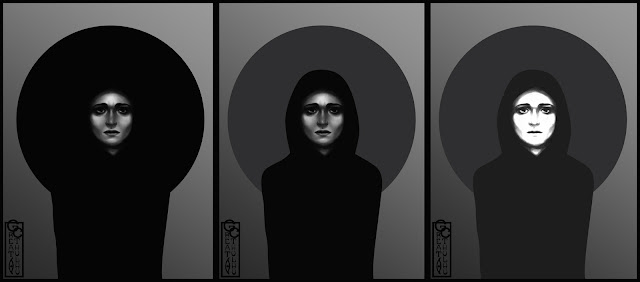Cooking the Classics: Caesar Salad
COOKING THE CLASSICS: CAESAR SALAD
If there’s one thing Americans love to order at restaurants, it’s a Caesar salad. Find out what it is, how to make it and what are its variants.
Can a salad really qualify as a recipe? It’s just throwing together raw ingredients, right? I beg to differ. Gathering raw ingredients strategically into a cohesive whole dish is an art form, and there are certain salads that should be included in any culinary pantheon. Waldorf? Check. Niçoise? Check. Caesar. Oh, yes.
The Caesar Salad has been described as America’s favorite, especially when it’s topped with grilled chicken. There are few dishes that you can comfortably place a bet that you’ll find in the vast majority of restaurant menus in America. A burger is one. Caesar Salad is likely in second place. It is so beloved, so ubiquitous that it can prompt rolls of the eye from chefs. But there’s nothing wrong with offering the public what they crave, and the phrase “chicken Caesar salad, please” has graced many millions of lips since its invention.
Invention, you ask? Doesn’t it go back to Julius Caesar? No, but it was invented, by another Caesar, on a specific date, at a specific restaurant—the sort of definitive provenance that is rare to find in gastronomic history books.
THE HISTORY OF CAESAR SALAD
It was a hot July 4 night in 1924 in Tijuana, Mexico at Caesar’s Restaurant, run by the Cardini family, brothers Alex and Cesare (the Americanization of the Italian name is Caesar), shortly before closing and when the kitchen was low on supplies, a large party arrived.
Depending on the source, the party may have involved a bunch of Hollywood stars or the Prince of Wales or a group of the Cardini’s friends (not all details are agreed-upon). Unsure what to serve them, Caesar pulled out whatever he could find in the kitchen and settled on a salad, tossing it tableside and serving it out of a giant bowl. Its contents: Romaine lettuce, croutons, Parmesan cheese, garlic, olive oil, egg yolk and Worcestershire sauce. Some sources include lemon juice and wine vinegar.
The salad was a big hit and became the claim to fame of the restaurant.
CHICKEN OR NOT?
The traditional ingredient that divides customers is anchovies, and this was not, it is said, part of that proto-recipe. Anchovies are an acquired taste, but chefs swear by their ability to add an umami kick, even when used in almost undetectable quantities. How did grilled chicken or grilled scampi end up atop said salad? That’s one historians can’t agree on.
But the mystery deepens. Alex Cardini, Caesar’s brother, who joined the family restaurant in 1926, claimed to have invented the Aviator’s Salad (named in honor of the pilots at a nearby base in San Diego, where the family also ran a restaurant). That Aviator’s Salad, Alex claimed, was what would become known as the Caesar Salad. It is Caesar’s daughter, Rosa, who stated that her father, not her uncle, had invented it. The truth remains obscure.
It was a big hit early on, the sort of dish that makes a restaurant a destination. Julia Child recalled eating it as a child on holiday in the 1920s, and a 1946 article by journalist Dorothy Kilgallenmentioned it as a “big food rage in Hollywood,” so it had migrated north of the border, and anchovies, pounded into a paste so they provided taste but not visible evidence, was present by then.
In February 1950 the family trademarked the term “Original Caesar Dressing,” as they knew they were onto something legendary. But you can’t copyright a recipe, and many a restaurant made their own versions of it.
So the beloved Chicken Caesar Salad of Americana is not the original. But neither was Dijon mustard, a staple of vinaigrettes, and Caesar Salad dressing contains mustard and lemon juice, as well as mashed anchovy. It also isn’t hard to copy, since the ingredients are not exotic and the preparation is so uncomplicated that anyone can make it at home.
HOW TO MAKE CAESAR SALAD?
It's safe to say that this was probably the least challenging of my dozens of Cooking the Classicsadventures.
The only thing that was new to me was making a paste of the anchovies. I’m not a big fan, but as a flavor enhancer, the way one would use fish sauce, I can dig it. I kept my grilled chicken away from the salad, and tossing it at the table in a big wooden bowl adds a nice bit of spectacle. The croutons give it a bit more heft, to make it a main course, and it has nice umami from the egg yolks and Parmesan, balanced with lemon juice for acidity.
It’s simple, refreshing. It’s a good salad. I can’t get too excited, I must say, and it’s not about to prompt me to fly to Tijuana, but I can appreciate a good salad that’s easy to make. There are times for ease and levity, and times for complicated three-day mole sauces. Hey, maybe I can create a fusion dish involved a "Mole Caesar Salad"? When in Tijuana…
http://bit.ly/2sSWT26


Comments
Post a Comment